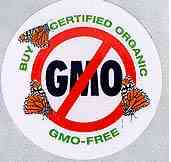Labeling genetically modified food in India
 In 2006, India proposed a draft rule requiring the labeling of all genetically modified (GM) foods and products derived thereof. This paper assesses the economic implications of introducing such a mandatory labeling policy for GM food. Focuses on four products that would likely be the first affected by such a regulation in India: cottonseed oil, soybean oil, brinjal (eggplant), and rice.
In 2006, India proposed a draft rule requiring the labeling of all genetically modified (GM) foods and products derived thereof. This paper assesses the economic implications of introducing such a mandatory labeling policy for GM food. Focuses on four products that would likely be the first affected by such a regulation in India: cottonseed oil, soybean oil, brinjal (eggplant), and rice.
In 2006, India proposed a draft rule requiring the labeling of all genetically modified (GM) foods and products derived thereof. This paper assesses the economic implications of introducing such a mandatory labeling policy for GM food. Focuses on four products that would likely be the first affected by such a regulation in India: cottonseed oil, soybean oil, brinjal (eggplant), and rice.
In 2006, India proposed a draft rule requiring the labeling of all genetically modified (GM) foods and products derived thereof. This paper use primary and secondary market data to assess the economic implications of introducing such a mandatory labeling policy for GM food. It focus on four products that would likely be the first affected by such a regulation in India: cottonseed oil, soybean oil, brinjal (eggplant), and rice. It find that GM food labeling would generate a specific market outcome for each of these products. With GM labeling, virtually all cottonseed oil would be labeled as GM, with limited costs for all actors involved, but also limited benefit for consumers. Labeling soybean oil derived from GM crops could affect market shares for edible oils at the benefit of domestic oils, and non-GM soybean oil could appear on the market at a very limited scale. Labeling GM brinjal would be extremely challenging. Assuming it was implemented, some non-GM brinjal would be sold at a premium in high-income retail outlets, while virtually all others would be labeled GM. A similar outcome would occur for rice, with high-quality rice used for both domestic consumption and exports markets certified non-GM and most of the remaining rice labeled as GM.
Related Content
- Food regulator wants packaged food labels to display if they contain GM ingredients
- Okay with GM crops after strict trial: Govt
- Pawar bats for GM crops in House
- The Biotechnology Regulatory Authority of India Bill, 2013
- Analysis of the data submitted by Monsanto to the Indian authorities on genetically engineered maize MON89034 x NK603
- Labels must for GM food from next year
